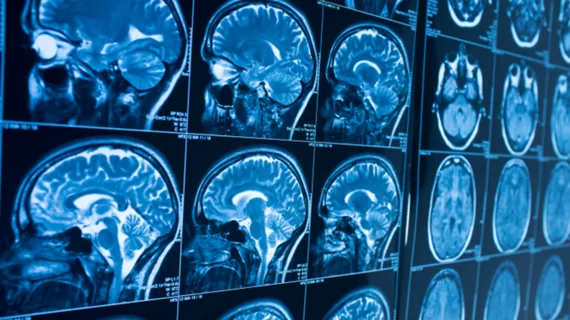Nonradiologist physicians aren’t qualified to perform advanced clinical image interpretations, study finds
No medical specialty outside of radiology and cardiology educate their trainees in image interpretation enough to justify nonradiologist physicians reading studies in the clinical setting, according to new research published Nov. 6 in the American Journal of Roentgenology.
The American College of Radiology mandates nonradiologist physicians who intend to interpret CT or MRI exams have completed 500 such reads in a supervised situation, among other requirements. These clinicians, however, account for only a “tiny” fraction of all advanced imaging interpretations, with radiologists and cardiologists completing the majority of reads.
And based on analysis of Medicare fee-for-service data—which accounts for nearly 20% of all advanced imaging in the U.S.—and academic medical centers offering no formal CT or MRI training for these physicians, the researchers believe nonradiologist physicians fall short of necessary requirements.
“Of the relatively few CT or MRI studies that are interpreted by nonradiologist physicians in hospitals, most are likely in a nonteaching context, suggesting that nonradiologist physicians have limited (if any) opportunities to achieve the required 500 interpretations,” Kofi-Buaku Atsina, with Thomas Jefferson University Hospitals’ Department of Radiology, and colleagues explained.
Concerns have been raised since the 1990s over whether or not nonradiologist physicians can accurately read advanced imaging studies, with self-referrals and increases in imaging utilization rates driving such questions. There hasn’t been much research into this topic, Atsina et al. wrote, even considering the potential patient safety concerns at stake.
The researchers analyzed current procedural terminology codes for CT, MRI, PET and general nuclear imaging taken from the CMS Physician/Supplier Procedure Summary Master Files in the Medicare Part B datasets for 2015.
Radiologists interpreted 99.29% (17,698,360) of CT exams, while nonradiologists read 0.71% (125,937). And of the 4,512,627 MRIs performed, radiologists read 99.04% of those, while their nonradiologist peers interpreted 0.96%. Similar disparities were found among PET and nuclear medicine studies, with cardiologists interpreting about 3% of all advanced imaging exams.
The researchers acknowledged that physicians in other specialties, such as surgery, may gain a certain level of imaging knowledge during residency and through other educational means, but these avenues don’t typically offer enough to complete clinical image interpretations.
“We have shown that physicians in specialties other than radiology or cardiology have very limited involvement in advanced imaging in hospitals,” the team concluded. “Our data therefore support the assertion that, aside from cardiologists, no other medical specialty provides sufficient education for their trainees in advanced imaging to justify allowing them to interpret these studies in practice, except under carefully controlled circumstances.”

